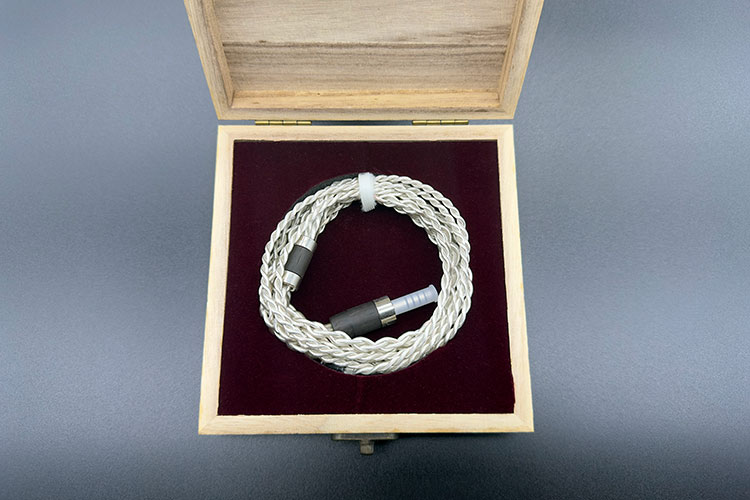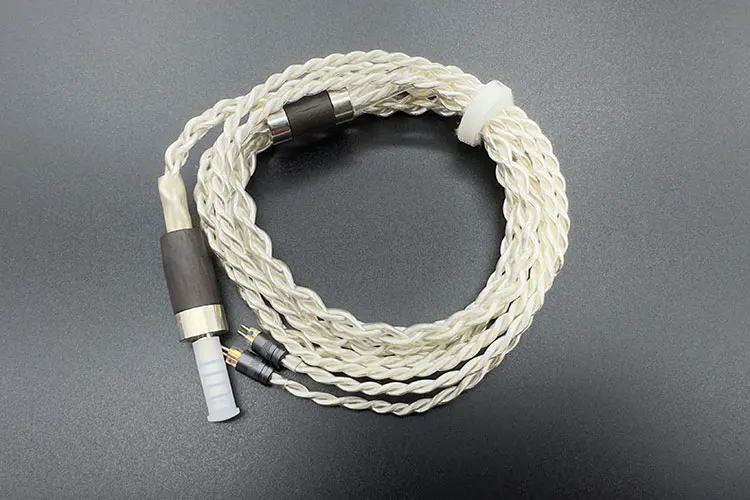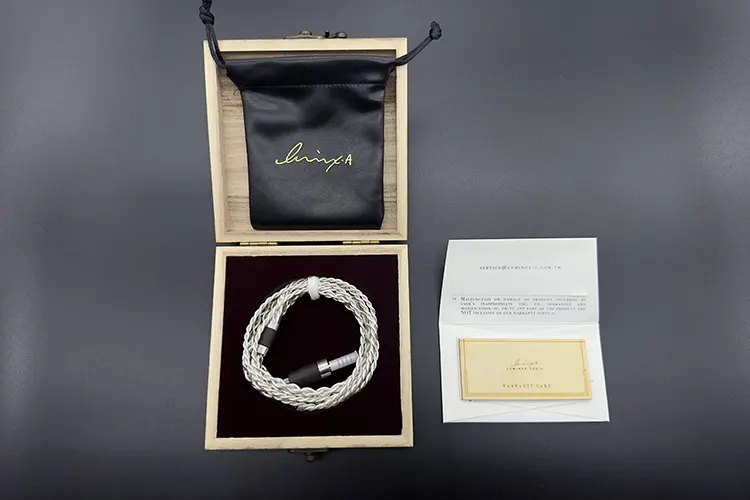Today, Nihal reviews the Luminox Audio Tri-Light, which is a high-end aftermarket triple coaxial Litz wire audio cable designed for IEM owners. It is priced at $950.
Disclaimer: This sample was sent to me in exchange for my honest opinion. Headfonics is an independent website with no affiliate links or status. I thank Luminox Audio for their support.
Click here to read more on Luminox Audio cables that we have previously reviewed on Headfonics
Note that this article follows our latest scoring guidelines, which you can read in more detail here.
Luminox is a Taiwanese brand with extensive expertise spanning more than 30 years in aftermarket audio cable manufacturing. They also provide OEM services to many other brands.
We have reviewed their flagship offering, the ‘Luminox’ cable, last year. This cable boasts several sophisticated and versatile features making it a unique offering in the IEM aftermarket cable niche.
The Tri-Light is priced at $950 and is the next step down cost-wise from the flagship but is still considered their ‘Premium Line’ offering.
It combines three different wire materials; silver-plated OCC copper, OCC copper, and silver-plated copper coaxial wires. So, like the flagship cable, this could be another potentially unique offering.
Read on to find out how it performs and compares to competing cables in my full review below.
Features
The Tri-Light cable combines three types of conductors – Silver Plated OCC Copper, OCC Copper, and Silver-Plated Copper coaxial wires.
These three materials are arranged in a three-layer structure in a coaxial-type architecture. Luminox calls it a TRI-COAXIAL cable design, the first of its kind to be implemented in an upgrade cable. The cable uses two different wire materials to wrap the wire core of a third material.
The innermost material of this arrangement is silver-plated OCC Copper. The OCC Copper forms the middle layer, and the outermost layer is Silver Plated Copper. Each of these layers is separated by insulating material.
The cable also boasts a patented pair-balancing technology, used to improve the overall sonic performance of the paired IEM. This technology excels at regulating current within the conductor, minimizing distortion, and creating a quieter, denser background.
Design
The Tri-Light cable’s design strikes a nice balance of premium looks and ease of use. Its sturdy construction is complemented by a sleek finish, offering both durability and aesthetic appeal. Every component exudes top-notch quality from the splitter to the 2-pin connectors and adapter plug.
The cable has a whitish-pearly color, with a nice shine and texture. The cable comes in a 4-wire configuration with an attractive braiding finish with no visible gaps. There is a slight firmness, and the weight is substantial but does not feel bulky.
The splitter has a cylindrical design with a rosewood covering and metal fittings on either end to give it a nice touch. The shape and size are normal, and the weight is light. The brand’s name is engraved on the upper end, where the left and right ends of the cable split.
The 4.4mm termination plug combines a rhodium-plated plug end, and the body is lightweight rosewood. The wooden part is nicely finished with a tapering end from where the cable emerges.
The connector, though it appears large, is lightweight and comes in alternative termination options including 2.5mm and 3.5mm termination plugs.
The 2-pin connectors on the cable are round in shape and grey in color. They are demarked with L and R to distinguish between the left and right sides. The 2-pins are quite small yet very nicely built.
Handling
The Tri-Light cable has a decent weight, but I do not think it is bulky considering the build and the materials’ quality. The weight is evenly distributed, and the fact that the splitter and adapters are not heavy makes the cable easy and comfortable to use.
The cable is not stiff, and it’s quite easy to roll it up and store, and does not tangle. One good thing is that when rolled, it does not uncoil on its own.
Overall, the cable is quite flexible with no significant downward tension from the weight of the wire. However, this tension is greater when you are on the move so the Tri-Light is not an ideal cable to be used when on the move.
The cable misses a memory ear hook and a cinch, which add a lot to comfort and ease. When put over the ear, the cable gets out of shape after a while and needs some adjustments.
Packaging & Accessories
Luminox Tri-Light comes in a wooden box. This box is lightweight, and the brand’s name is painted on the top of it. The box’s edges may soften, and the colors might gradually fade around the corners with extended use.
Upon opening the box, one gets a small black pouch, and the cable is put in a round cutout. Inside the pouch, neatly packed within a paper sleeve, are the instruction manual and warranty card. The interior of the box is lined with maroon-colored velvet, giving it a nice feel.
The case is designed only to store the cable, lacking adequate space for an IEM. Additionally, the pouch provided is rather cramped so, I would have preferred a larger box and a case with ample space to accommodate everything comfortably.
Performance Impressions
The following sound impressions of the Luminox Tri-Light Cable were completed using 64 Audio Fourte, Noble Audio Kublai Khan, and Kinera Verdandi alongside my main source, Lotoo’s Paw Gold Touch.
Summary
As the brand mentions, the Tri-Light is focused on bringing out an organic sound with a better sense of airiness. The cable works quite well in improving the overall resolution and clarity with some noticeable enhancements in the imaging and separation of instruments with the paired IEMs.
Timbre
The Tri-Light targets reproducing an airy and effortless sound. It does a good job of delivering a consistently pleasing sound, preserving the original timbre while introducing an organic quality to the sound, which screams “more details and high resolution”.
The cable does not alter the original timbre much. At most, it adds a little warmth to the cleaner stock tuning of some of the paired IEMS, effectively smoothing out the overall sound.
On the lows of the paired IEMs, the Tri-Light focuses more on quality than quantity, whilst refining the bass texture. The depth in the sub-bass seems to take a hit, and the mid-bass lacks some of its former punch and impact.
Additionally, there’s a noticeable increase in decay speed so the bass spreads out more and misses the impact it would have had earlier.
The Tri-Light truly shines in the midrange department. The midrange has a sense of better clarity and resolution with a decent level of detailing and more forwardness in the mids.
Every minute detail comes out very nicely. Vocals gain a newfound organic richness, while instruments like strings and piano exhibit a fuller, more vibrant presence. I thoroughly enjoyed the intimate vocals on the track, as they seem to place the singers front and center while the instruments provide an engaging backdrop.
Through the highs, there’s a noticeable increase in spaciousness and clarity. Details are more pronounced, and the overall resolution is enhanced. However, the Tri-Light may not be suitable for IEMs with an already crisp treble or those with a bright character, as it can accentuate harshness and sibilance.
Staging & Imaging
The Tri-Light significantly enhances the overall soundstage. When you switch the cable on your IEMs, this is one of the immediate improvements you’ll notice.
There is more widening of the depth than the width. The stage gains a more realistic and expansive quality, with an increase in spaciousness in both the front and back areas, presenting a better sense of realism. This adds to a more immersive, three-dimensional audio experience.
The imaging is enhanced by the Tri-Light, resulting in more precise spatiality for the instruments. With improved staging depth, instruments and vocals spread out further, providing a better sense of accuracy in their positioning. The instruments get a more spacious stage, and the details sound clearer with more accurate imaging.
Click on page 2 below for my recommended pairings and selected comparisons.






